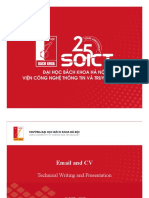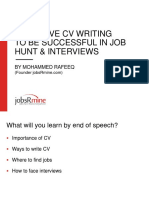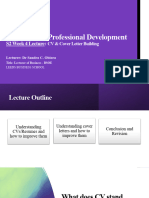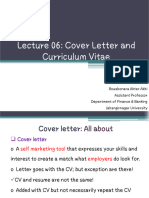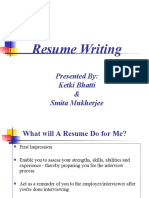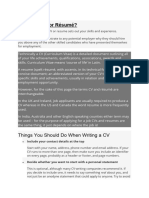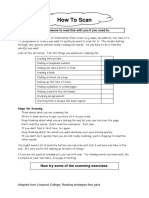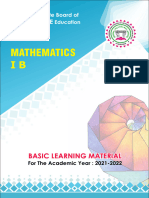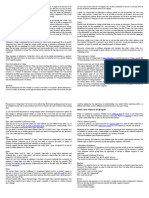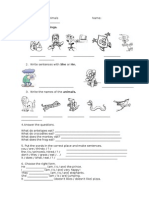WEEK 1 - Communication in the Professions • Employment Agencies (Aguinaldo
Recruitment, Manila Recruitment, Michael
Steps in the job application process; (AELAWWAJ) Page, etc)
1. Analyze yourself 4. Assemble your dossier and portfolio
2. Enhance your image (Gain EXP) Dosier
3. Look for places/mediums to get a job • Dossier – French for “bundle of
4. Assemble your dossier and portfolio documents”. Provides information about
you and your work.
5. Write your CV/Resume
• These are documents GIVEN to you
6. Writing a letter of application and filling
out a job application Documents included in a Dossier:
7. Assessment and Interview 1. Letter of Recommendation
8. Job offer 2. Awards, certificates, and
acknowledgements
3. Academic Record or Transcript of Records
1. Analyze yourself (TOR)
• Be clear about the job 4. Diplomas, certificates, licenses,
• Reflect on your degree and skillsets government IDs
• Make sure that you have the necessary
skills (Flex your achievements)
• Do your research and get advice “I’m very proud that I was a nerd. Life is the
revenge of the nerds, you know?” - Miriam
Defensor-Santiago
2. Enhance your image (Gain EXP)
• What are your specialties?
Portfolios/Webfolios
• Are you a member of any organization
before? • Documents that YOU created or produced
yourself
• Have you ever done any form of job prior
to this one? • Paintings, blueprints, essays, photos,
presentations, etc.
• Do research about what is trending and
how it aligns to your current skillsets What does it typically contain?
• Study, study, study and gain experience 1. Mission statement that outlines your
career goals and work skills
“Treat your life like a game” – Ray Daloi
2. Copy of your Curriculum Vitae (CV)
3. Impressive written works you did in
3. Look for places/mediums to get a job college like thesis papers with positive
instructor comments
Where should I look? (NONHE)
4. Media presentations stored in a USB (it
• Networking and build connections
your work is in digital format)
• Online job – postings (Jobstreet,
5. List of references with contact information
Job&Talent,Indeed, etc.)
• Newspapers
Please don’t include these in your portfolio;
• Human Resources
1. Documents of you being a member in
clubs
� 2. Links to personal social media accounts • Arrange information so that it is easy to
follow, logical, and consistent
3. Pictures of family, friends or anything too
personal • The way you organize information shows
you have the ability to process
4. Irrelevant articles that indirectly information and summarize
addresses you
• Remember that employers want a
CV/Resume where they can find what is
important immediately, they don’t want to
look for it
5. Write your CV/Resume
Resume – Surface level of knowledge about you
Biodata – Given by the company
4.Concise
Curriculum Vitae – More detailed, usually 2
pages. • Make it on point
Expect that your CV to be: (HACCACRS) • Generally, for a resume, it can be
condensed into a 1-page format.
1. Honest
• A Curriculum Vitae can range to 3 to 5
2. Attractive pages depending on work history of the
individual.
3. Carefully Organized
5.Accurate
4. Concise
• Make sure that your grammar, spelling,
5. Accurate
dates, names, titles, and programs are
6. Current correct.
7. Relevant • Any inconsistency or error on your
document reflects that you did not check
8. Simple it, therefore, making you seem careless.
• Remember, your CV/Resume is a reflection
1. Honest of yourself
6.Current
• Be truthful about your qualifications – your
education, experience, and skills • All information should be up – to – date
and documented.
• Distorting, exaggerating, or falsifying
information about yourself in your • There should be no gaps or in – between
resume/CV is unethical and could cost you your education and previous jobs.
your job
• Leaving our details about your history can
2. Attractive be seen as red flags by employers
• Document should be pleasing to the eye, • AGAIN, BE HONEST
generous with margins, consistent
punctuations, suitable spacing, and use of 7.Relevant
readable font.
• The information on your CV/Resume
• An Attractive Resume/CV does not mean should be appropriate for the job
you should include designs like clip arts or description and level
excessive capitalizations
• It must show that you have the necessary
3.Carefully Organized education and experience and must
confirm that you are a team player
� • Only provide what you think is needed for the employer, hiring manager or recruiter
the job you are applying to in person, on the phone, or both.
8.Simple • Remember that the company may conduct
numerous interviews before it eventually
• Make sure that your CV has simple format offers the leading candidate the job.
• Black and white color of font is always • While some interviews occur in small
preferable groups, others are one-on-one.
• Remember, colorful and expressive writing Tips for Successful Job Interview
does not mean creative in CV/Resume in
job applications 1. Be on time
2. Greet the interviewer
3. Remember the interviewer’s name and
pronunciation
4. Listen carefully to the interviewer
5. Be mindful of grammar
6. Writing a letter of application and filling 6. Be yourself but be respectful
out a job
7. Close on a positive and enthusiastic note
• An application letter introduces you to the
employer, hoping to get an interview,
ultimately a job
• Follow the three P’s: Personable,
Professional, and Persuasive
Ask yourself these questions when writing
an Application Letter:
1. Why are you writing?
2. Where, whom, or how did you learn of the
job?
3. What is the specific job title you are
applying for?
4. What is your most important qualification
for the job?
7. Assessment and Interview
• The selection procedures and tests often
include background checks, credit checks,
medical examinations, personality tests,
cognitive tests and talent assessment
tests.
• Although some of these tests are
conducted as part of the application
process, others occur during the hiring
process — sometimes even after an
interview.
Interview process
• Upon being shortlisted for an interview,
you may receive an invitation to talk to








